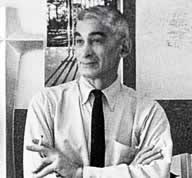Charles Morton Goodman FAIA | |
|---|---|
 | |
| Born | November 26, 1906 New York City, US |
| Died | October 29, 1992 (aged 85) Alexandria, Virginia, US |
| Resting place | Ivy Hill Cemetery, Alexandria |
| Alma mater | Chicago School of Architecture of the Armour Institute (1934) |
| Occupation | Architect |
| Years active | 1934–1986 |
| Spouse(s) | Charlotte Kathleen Dodge (m. 1934, d. 1979) Dorothy Mae Sopchick (m. 1980, d. 2013) |
| Children | 1 |
| Awards | AIA National Award of Merit |
| Practice | Charles M. Goodman Associates |
| Buildings | Charles M. Goodman House, Unitarian Universalist Church of Arlington, Hawthorne School |
| Projects | Alcoa House, The Commons, Hickory Cluster, Hollin Hills, National Homes Corp., River Park, Rock Creek Palisades, United States Post Offices, the Unitarian Church of Arlington, Washington, D.C., Southwest Urban Renewal, Washington National Airport, Westgate and Westpark Research Parks |
Charles M. Goodman FAIA (November 26, 1906 – October 29, 1992) was an American architect who made a name for his modern designs in suburban Washington, D.C., after World War II. While his work has a regional feel, he ignored the colonial revival look so popular in Virginia. Goodman was quoted in the 1968 survey book Architecture in Virginia as saying that he aimed to "get away from straight historical reproduction."
Goodman, who developed preliminary designs for Washington National Airport and served as main architect of the Hollin Hills neighborhood in Alexandria, Virginia, attended the Illinois Institute of Technology. He came to D.C. in 1934 to work as the designing architect in the Public Buildings Administration. He later served as head architect at the United States Treasury Department and the Air Transport Command. After World War II he worked closely with Robert C. Davenport designing and site planning most of the Hollin Hills, where his firm, Charles M. Goodman Associates, designed over 14 models of house.
During the 1950s and 1960s, Goodman designed prefabricated homes for the National Homes Corporation of Lafayette, Indiana. It is estimated more than 325,000 homes throughout the United States were built using his National Homes’ designs. Such as “The Ranger”, “The Main Line”, “The Custom Line”, and “The Cadet”.